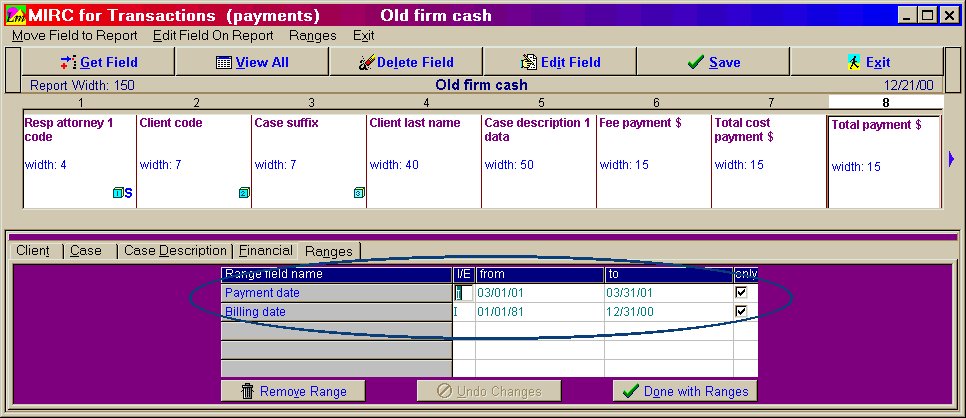


We get questions of this order quite often. Many of our clients think that they must create a separate Legalmaster database for the new entity so that they can run completely separate reports. Although this is possible to do, it is generally
not the best solution. Legalmaster does indeed permit you to maintain the data for as many as 30 independent firms, but this feature was created for those of you who act as "service bureaus"; i.e., billers for multiple independent law firms.
It is extremely likely that you will be able to continue to run Legalmaster with little or no changes in your day-to-day operations and still get the information that you need in order to divide your receipts properly. Of course, the precise
procedures that you must undergo will depend upon the precise terms of your agreement.
There are a number of reasons for not creating multiple databases to deal with changes in your partnership agreement and instead to rely upon Legalmaster's ability to produce date-sensitive management reports.
The most important question is related to whether your agreement is based upon performance date or billing date. Let us illustrate with an example.
Some firms would say that since the total billing took place after the critical date, all of the receipt belongs to the new partnership. Others would counter that the old partnership merits that portion that reflects the work done prior to the
critical date. Your position on this pivotal issue will determine how you proceed. But what's important is that Legalmaster can handle it either way.
Two of Legalmaster's features make all of this possible.
If your work dates transcend the critical date and you wish to apply payments based upon work dates, then you will have to run the billing generator twice, once for the work performed up to the critical date and a second time for
the work performed after the critical date. In addition, you will have to run the first billing generator with a conventional system date that precedes the date of any billing generator run for work that took place after the critical date. As a
result, you may use your billing dates as a means to separate the two "firms" on your management reports.
The MIRC report below shows you how to get a list of all payments that took place in March of 2001 that were applied to billings that took place on or before December 31, 2000. Take note of the ranges section (surrounded by the oval). We sorted the
report by case within responsible attorney.
Don't forget also to address payments that were unapplied at the moment of the critical date but became applied later, presumably to the new partnership. This is addressed in much the same way, but with different date ranges. In this case the
payment date range is 1/1/81 through the critical cate and the billing date is later, whenever you ran the billing generator.
Our firm is changing its partnership agreement. How do we track receipts that are applied to billings that occurred before and after the critical date?
Disadvantages of multiple databases
The critical issue that you must address that affects the reports you must run and the procedures you may have to change

Return me to the list of Frequently Asked Questions.